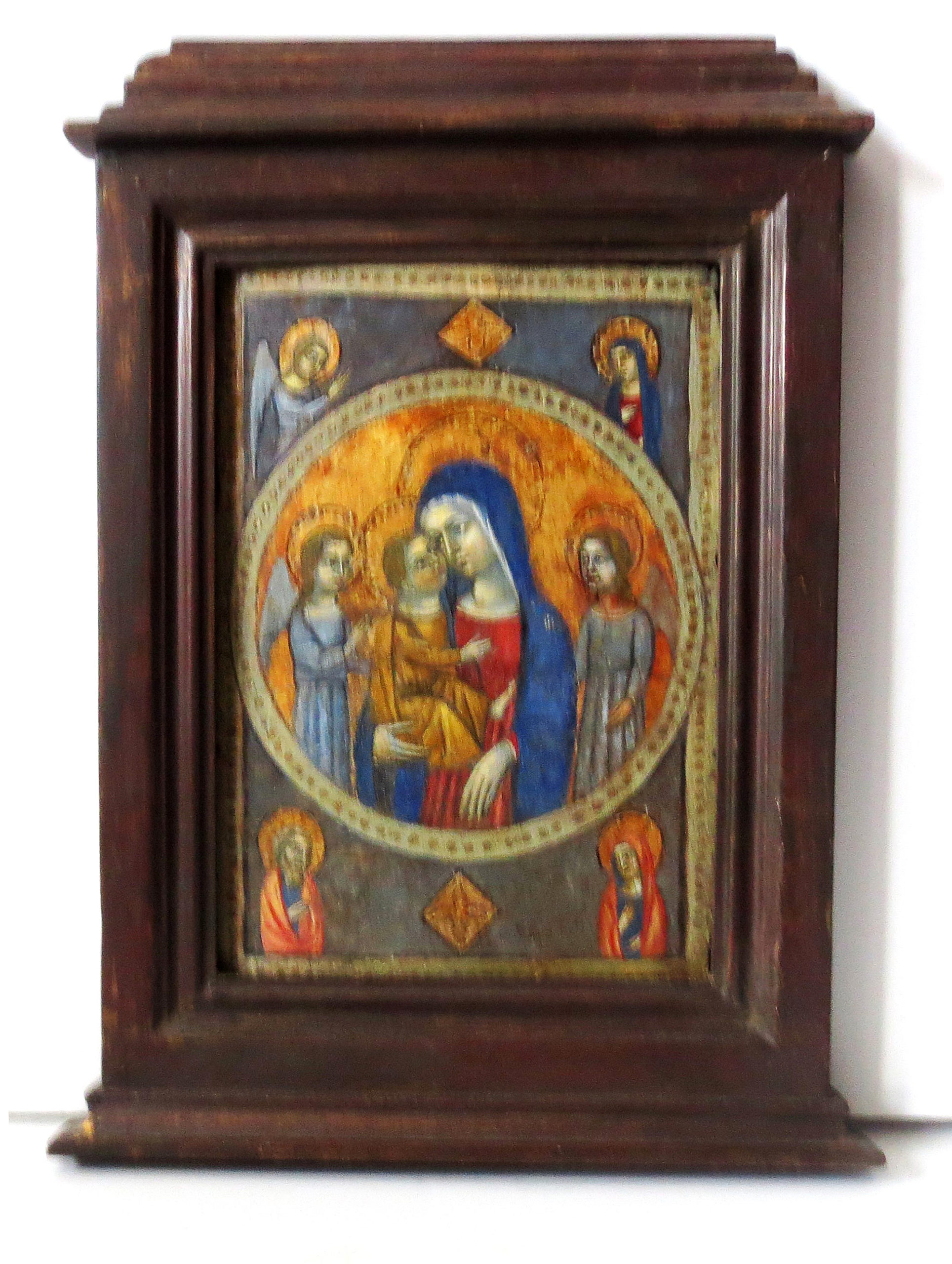A small domestic votive image of a compositional type found in both smaller paintings and large frescos and mosaics in Tuscany, Rome and Naples from about 1280 to 1320 in which either Christ or the Madonna and Child are centered in a circular frame within outer corner images of apostles or narrative figures adding some ecclesiastic reference or embellishment. In this painting, the upper pair of small figures show the angel Gabriel and the Virgin Mary at the Annunciation of her virgin pregnancy. In the lower two corners are figures of Joachim and Anna, parents of the Virgin and presumed by some Franciscans without dogmatic sanction to have also bore the Virgin Mary through immaculate insemination. At the least, the juxtaposition of one immaculate conception with Christ’s temporal grandparents a patron for this votive among those pious followers of the Franciscan order who accepted the Immaculate conception of the Virgin like that of her Son.
At the very least, there is an element of contemporary Franciscan influence in the general style of this painting as a somewhat regional party to the current urban shift from Greek formality to Roman naturalism already apparent in the pre-Giotto circle of Pietro Cavallini at the turn of the century as seen in the monumental programs by Cavallini, Torritti, Rusuti in the Roman churches of Sta. Maria Trastevere, Sta. Cecilia, et alia, work by their followers further afield in Venice, Assisi and Naples.
Although the brothers D’arezzo are mentioned in some early documents, an attribution of one of their rare paintings to either one or the other is not really possible in the absence of individually signed work, although it may well be that they divided their work between figures and the background and gilding. Nevertheless, a very close analogue to this painting is found in a tempera on gold ground panel of the Baptism of Christ exhibited and published in Paris (and London?) some years back by Giovanni and Claire Sarti, for which cf. Filippo Todini’s brief but invaluable entry on two paintings attributed to the brothers in G. Sarti, Trente-Trois Primitifs Italiens de 1310 à 1500: du Sacré au Profane, Paris (after 1996 but s.d.), pp. 16-19. Faces, hands, drapery types and patterns almost exactly matched throughout, other more generic traits show the modification of older Byzantine facial and figure formulae towards the more gracefully plastic Roman style introduced by Cavallini.

